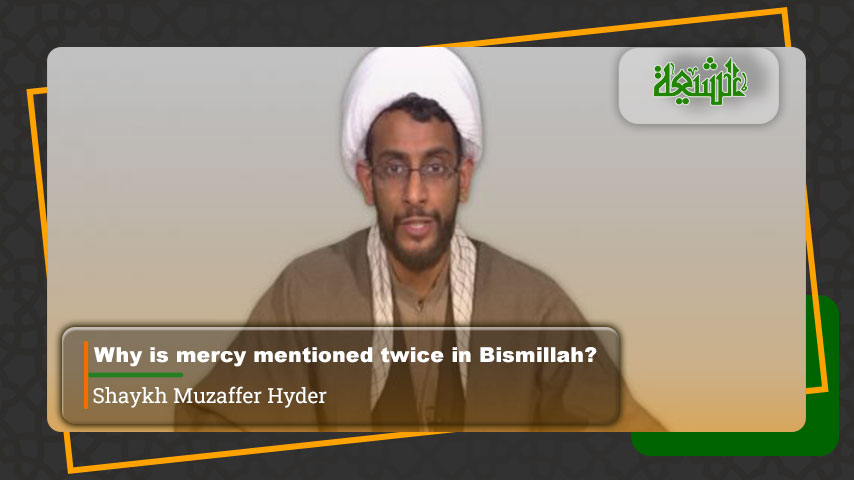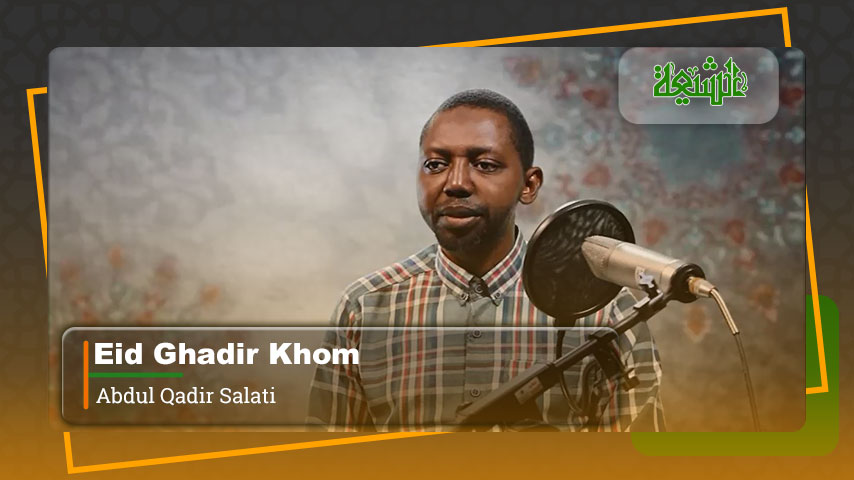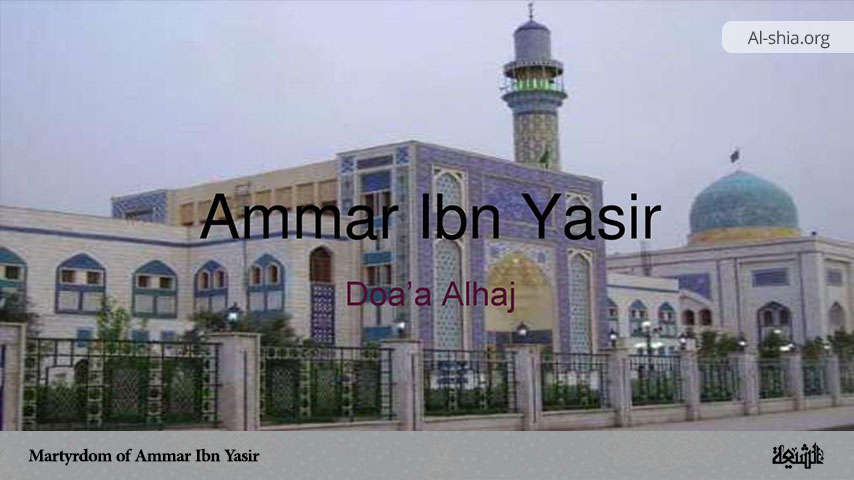Eid al-Ghadir, celebrated by millions of Muslims worldwide, is a pivotal event in Islamic history, revered especially within Shia Islam. Marking the day when Prophet Muhammad (PBUHH) declared Imam Ali (AS) as his successor at Ghadir Khumm, Eid Ghadir is considered the “Greatest Eid” due to its profound spiritual and communal significance. This great historical event holds deep theological importance, symbolizing the continuity of divine guidance through the leadership of Imam Ali. The celebration of Eid Ghadir embodies themes of faith, loyalty, and unity, making it a cornerstone of Shia Islamic identity and a moment of joy and reflection for believers. This article delves into the historical origins, religious significance, and a comparison with other Eids, so as to establish why it is regarded as the greatest Eid in Islamic tradition.
Historical Background
The declaration at Ghadir Khumm occurred on the 18th of Dhu al-Hijjah in the year 10 AH[1] (632 CE) as Prophet Muhammad (PBUH) and his followers were returning to Medina after the Farewell Pilgrimage. Ghadir Khumm is a location between Mecca and Medina, where the Prophet stopped to deliver an important sermon to the assembled crowd. This event is regarded as a pivotal moment in Islamic history, particularly in Shia Islam.
Eid Ghadir traces its origins to a pivotal event in Islamic history that occurred on the 18th of Dhu al-Hijjah in the year 10 AH (632 CE)[2]. This event, known as the declaration at Ghadir Khumm, is considered one of the most significant moments in the history of Islam, especially among Shia Muslims.
Understanding the historical background of Eid Ghadir is essential for grasping its significance in Islamic tradition. The event at Ghadir Khumm not only marks a key moment in the life of Prophet Muhammad (PBUHH) but also serves as a cornerstone for the Shia faith, shaping the religious, cultural, and political identity of its followers.
Following the Farewell Pilgrimage (Hajj) to Mecca, Prophet Muhammad (PBUH) and a large number of his followers stopped at a place called Ghadir Khumm, located between Mecca and Medina. Here, Prophet Muhammad received a revelation[3] through the Archangel thus: “O Apostle! Communicate that which has been sent down to you from your Lord, and if you do not, you will not have communicated His message, and Allah shall protect you from the people. Indeed, Allah does not guide the faithless lot.[4]“
Thereafter, the Holy Prophet (PBUHH) delivered a sermon to the assembled crowd. During this sermon, he raised the hand of his cousin and son-in-law, Ali ibn Abi Talib (AS), and declared: “Whomsoever I have been the master (Mawla), Ali here is to be his master (Mawla). O God, befriend the one who befriends him and be the enemy of the one who is hostile to him[5].”
This proclamation was seen as an unequivocal endorsement of Ali’s leadership and succession by the Prophet himself. The term “Mawla” has been interpreted to mean “leader” or “guardian,” solidifying Ali’s position as the rightful successor to Prophet Muhammad (PBUHH).
Immediately after this proclamation in Ghadir Khumm, the Verse of Perfection[6] (Ayah of Ikmāl) was revealed thus: “Today I have perfected your religion for you, and I have completed My blessing upon you, and I have approved Islam as your religion[7].”
Among the thousands of Muslims present at Ghadir Khumm were prominent companions of the Prophet, including Abu Bakr, Umar, Uthman, and Ali ibn Abi Talib (AS). Their attendance and acknowledgement of the Prophet’s declaration are often highlighted in both Sunni and Shia historical accounts[8].
The presence of numerous witnesses is a significant aspect of the event at Ghadir Khumm. Many companions of the Prophet[9], including notable figures such as Abu Bakr and Umar, are recorded to have congratulated Ali on this occasion. Umar is reported to have said: “Congratulations, O son of Abu Talib! This morning you have become the master of all believing men and women[10].”
The third verse which some scholars[11] believed to be revealed in Ghadir Khumm was the first three verses of the Qur’an 70 [Surah al-Ma’arij] when Harith ibn Nu’man al-Fahri (or Nadhr ibn Harith according to another tradition) challenged the Holy Prophet (PBUHH) after the Proclamation “O Allah! If what Muhammad said is correct then fling on us a stone from the sky and subject us to severe pain and torture.” He had not reached his camel when Allah flung at him a stone which struck him on his head, penetrated his body and left him dead. Then, Allah, the Exalted, revealed the following verses: “An asker asked for a punishment sure to befall, which none can avert from the faithless, from Allah, Lord of the lofty stations[12].”
The declaration at Ghadir Khumm stands as a foundational moment in Islamic history, particularly for Shia Muslims who view it as the divinely ordained appointment of Ali ibn Abi Talib as the successor to Prophet Muhammad (PBUHH). This event not only underscores the importance of the Ahl al-Bayt but also highlights the Prophet’s efforts to ensure the continuity of leadership and guidance for the Muslim community.
Religious Significance
Eid Ghadir holds immense religious significance in Islam, particularly within the Shia tradition. It marks the day when Prophet Muhammad (PBUHH) declared Ali ibn Abi Talib (AS) as his successor, establishing a cornerstone of Shia belief regarding the rightful leadership of the Muslim community. The event has profound theological, spiritual, and communal implications.
For Shia Muslims, Eid Ghadir is one of the most important religious observances, second only to Ashura. The declaration at Ghadir Khumm is viewed as the formal appointment of Ali as the first Imam, divinely chosen to lead the Muslim ummah. This event underscores the concept of Imamate, a fundamental tenet in Shia Islam, which holds that leadership of the Muslim community must remain within the Prophet’s family (Ahl al-Bayt) and that Imams are divinely guided.
Meanwhile, the key points of significance include:
- Divine Mandate: Shia Muslims believe that the declaration at Ghadir Khumm was a divine mandate, where Allah Himself directed the Prophet to announce Ali’s leadership. This is based on the Qur’anic verse: “O Apostle! Communicate that which has been sent down to you from your Lord” (Quran 5: 67)
- Succession and Leadership: The event signifies the continuity of divine guidance through the Imamate, ensuring that the Muslim community remains under the leadership of those divinely appointed and infallible.
- Spiritual Authority: Ali’s designation as the Mawla (master or leader) by the Prophet (PBUHH) is seen as an affirmation of his spiritual authority and his role as the interpreter of the Quran and the Prophet’s teachings.
- Community Bonding: The celebration of Eid Ghadir brings the community together, promoting solidarity and collective reflection on the significance of the event.
- Renewal of Allegiance: It is an occasion for Shia Muslims to renew their allegiance to Imam Ali and the principles he stood for, such as justice, knowledge, and piety.
Comparison with Other Islamic Eids
Eid Ghadir, while unique in its significance and practices, can be compared to the other major Islamic Eids such as Eid al-Fitr and Eid al-Adha to highlight its peculiarities and distinct aspects.
Eid al-Fitr celebrated on the 1st of Shawwal (the tenth month in the Islamic calendar) marks the end of the Ramadan fast. It is a time for celebrating the conclusion of a month of self-discipline, worship, and empathy for the less fortunate. Similarly, Eid al-Adha celebrated on the 10th of Dhu al-Hijjah (the twelfth month of the Islamic calendar) commemorates the willingness of Prophet Ibrahim (AS) to sacrifice his son Ismail (AS) in obedience to Allah’s command and coincides with the completion of the Hajj pilgrimage.
Eid al-Ghadir is celebrated on the 18th of Dhu al-Hijjah to commemorate the day the religion was perfected, blessing completed and Islam was approved as the religion of salvation with the appointment of Ali (AS) as the successor of Prophet Muhammad (PBUHH). Therefore, Eid al-Ghadir highlights the importance of leadership and the continuity of divine guidance through the Imamate.
In view of this, it is observed that Eid al-Fitr is marked and celebrated by all Muslims after the completion of a part of the religion (i.e., fasting), but not the whole religion. Likewise, Eid al-Adha is marked and celebrated by all Muslims after the completion of the Hajj Pilgrimage, which is also a part of the religion. However, Eid al-Ghadir is celebrated and marked by the believers after the perfection of the entire religion and the completion of divine blessings, as stated in verse 67 of Qur’an 5. In addition, the Holy Prophet (PBUHH) was also reported to have said, “The day of Ghadir Khumm is the greatest Eid of my people and that is the day when God perfected religion, and completed His blessing upon my people, and approved Islam as their religion[13].”
Imam al-Sadiq (PBUH) also said, “Day of Ghadir Khumm is a great Eid of God. God has not chosen a prophet unless He has regarded that day as Eid and has glorified it, and the name of this day is the “Day of Promise” in the Heavens and the “Day of Covenant” on the earth[14].”
Conclusion
Eid Ghadir, a significant Shia celebration commemorating Prophet Muhammad’s (PBUH) designation of Ali ibn Abi Talib (AS) as his successor at Ghadir Khumm, holds deep historical and religious significance. It fosters spiritual devotion, community unity, and social responsibility through traditional rituals and modern practices. Eid Ghadir enriches the cultural identity of Shia Muslims, emphasizing leadership, justice, and communal bonds, thus playing a vital role in their spiritual and social lives. Recognizing its diverse expressions promotes greater understanding and harmony within the broader Muslim community. Compared to the other major Islamic Eids such as Eid al-Fitr and Eid al-Adha, it is observed that Eid al-Ghadir is the greatest Eid of Islam because it is a period when the religion is perfected, the divine blessing is completed and Islam is approved by God as the only way to salvation.
References
[1] . Al-Tabrasi, Al-Ihtijaj, Vol.1, p.56; al-Mufid, Kitab Al-Irshad, p.91; al-Halabi, Al-Sira al-Halabiyya, vol. 3, p. 308.
[2] . Al-Nasa’I, Al-Sunan al-Kubra, p. 25.
[3] . Some of Sunni references confirming the revelation of the Qur’anic verse in Ghadir Khumm include: Fakhr al-Razi, Tafsir al-Kabir, vol. 12, pp 49-50; al-Wahidi, Asbab al-Nuzool, p. 50; al-Suyuti, Durr al-Manthur (under commentary of verse 5:67); Noor al-Din al-Halabi, al-Sirah al-Halabiyah, vol 3, p. 301, Tafsir al-Nisaboori, vol. 6, p. 194.
[4] . Qur’an 5: 67.
[5] . Sahih Tirmidhi, vol. 2, p. 298; Sunan Ibn Maja, vol. 1, pp 12, 43; al-Mustadrak Sahihayn, vol. 2, p. 129; Majma’ al-Zawa’id, by al-Haythami, vol. 9, p. 103; Tarikh al-Khulafa, by al-Suyuti, pp 169, 173; al-Bidayah wal-Nihayah, by Ibn Kathir, vol. 3, p. 213; Kanzul Ummal, by al-Muttaqi al-Hindi, vol. 6, pp 154, 397.
[6] . Some of the Sunni references which mentioned the revelation of the Qur’anic verse in Ghadir Khumm include: al-Durr al-Manthur, by al-Suyuti, vol. 3, p. 19; Manāqib, by Ibn Maghazali, p. 19; al-Bidayah wa al-Nihayah, by Ibn Kathir, vol. 3, p. 213; Yanabi’ al-Mawaddah, by al-Quduzi al-Hanafi, p. 115; Tarikh Damascus, Ibn Asakir, vol. 2, p. 75.
[7] . Qur’an 5: 3.
[8] . Ahmad ibn Hanbal, Musnad Ahmad Ibn Hanbal, vol. 4, p. 281; Fakhr al-Razi, Tafsir al-Kabir, vol. 12, pp 49-50.
[9] . On the number of companions present in Ghadir Khumm, one of the Sunni scholars, Ibn al-Jawzi in his Manāqib writes: “There were with the Messenger (S) from the companions, Arabs, residents around Mecca and Medina one hundred and twenty thousand (120,000) and they are those who were present in the Farewell Pilgrimage and heard this speech.”
[10] . Ahmad ibn Hanbal, Musnad Ahmad ibn Hanbal, vol. 4, P.281; al-Mufid, Kitab Al-Irshad, p.94.
[11] . Nur al-Din al-Halabi, al-Sirah al-Halabiyah, vol. 2, p. 214; Shablanji, Nur al-Absar, p. 4; Ibn Sabbagh al-Maliki al-Makki, al-Fusul al-Muhimmah, p. 25; Ishaq al-Tha’labi, Tafsir al-Tha’labi (under the commentary of verse 1-3 of Qur’an 70).
[12] . Qur’an 70: 1-3.
[13] . Al-Saduq, al-Amali, p. 125.
[14] . Al-Hurr al-‘Amili, Wasa’il al-shi’a. Vol.5, P.224



















I want to convert in shia so give me guidance. Please give me guidance about contact of such person who give me guidance.
Changing of school of thought is not an easy task. If you really want to revert to Shia, you need to carry out research on this. This site could also help you with needed materials.